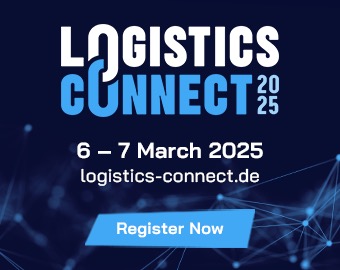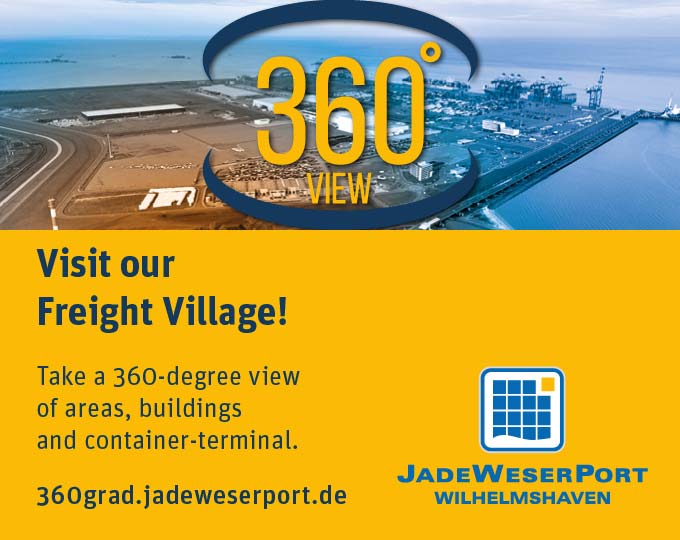Where digitalisation is concerned, many people think of seaport terminals, but this has long been becoming more important in the hinterland. The container terminals in Osnabrück (CTOS) and Nuremberg (TriCon) demonstrate how much IT is already in use in inland terminals.
Hazardous goods, semi-trailers and swap bodies, unlike standard load carriers, still have to be checked manually. ‘Here, our employees verify whether the load carrier is also suitable for transshipment,’ he added. OCR will also be used for trains in the future. In connection with the expansion of the first module, a corresponding gate is to be set up in the port of Nuremberg.
Some persuasion required
Another milestone was the introduction of a multilingual driver app in spring of this year, since which drivers have been able to register contactlessly at the gate using a booking code. The OCR data is then sent to the Terminal Operating System (TOS), and the driver automatically receives information regarding the slot they must drive to to collect the container. ‘At the moment, however, the level of usage is only about 10 per cent,’ Schreyer explained regretfully. ‘Some drivers shy away from data entry, others prefer to have the social contact.’ An update that allows haulage companies to perform the data entry for the driver should now help to improve the rate, he added.
Mandatory slot booking, as has already been the procedure at the large Eurogate and HHLA container terminals for several years, is not yet part of the app, but will be necessary in the future. ‘With this kind of slot management, we can equalise processing and increase planning reliability for everyone, as well as significantly speed up our processes and increase our efficiency,’ explained Schreyer.
However, since this is quite demanding, TriCon has taken the lead of a consortium of project partners that includes the IT companies Cargo Support Service and Conroo, the Institute for Maritime Logistics (MLS), the Fraunhofer Center for Maritime Logistics and Services (CML) and the German Promotion Centre for Intermodal Transport (SGKV; Studiengesellschaft für den Kombinierten Verkehr). By 2025, the three-year ‘Flexiking’ project, funded by the Federal Ministry of Digital Affairs and Transport (BMDV) as part of IHATEC II (Innovative Port Technologies), will develop an smart multi-agent system for the collaborative coordination of time slots.
Digitalisation also plays a major role at the Container Terminal Osnabrück (CTOS), which only went into operation at the beginning of 2022. Linking the TOS with the Gate Operating System (GOS) plays a key part here, too. In the future, all trucks in Osnabrück will be recognised automatically by means of an OCR system and the data will be transmitted to the TOS. The gates required for this have already been set up, but are not yet in operation. ‘The recognition quality is currently far below the prescribed 95-96 per cent,’ explained Managing Director Björn Tiemann. ‘This needs to be improved for us to use it properly in our business operations.’
Digitisation will play an important role at the CTOS, commissioned in 2022.
Complex algorithm training
The challenge is to train the smart computer system correctly, and this is where the devil is in the detail. Recently, for example, the software recognised Dutch number plates, but not German ones. American number plates, which some truckers decorate their vehicles with, as well as rental company chassis numbers above the bumper, or number plates attached to the left instead of the centre, also led to confusion. A cable popping out when fastened with cable ties was also falsely read as the number 1. The algorithms are currently being adapted to eliminate such problems. ‘It could take another six months or so to get this working fully for trucks,’ Tiemann said.
The next step is also a ‘Railgate’ in Osnabrück. ‘Up to now, when a train arrives, our employees hurry to check the wagons against the loading lists,’ the managing director explained. ‘For the 700 metres through the track bed, they’re on the move for at least half an hour per route, meaning a train is sometimes entered into the system as much as an hour after arriving.’ Only by digitalising processes to make them faster and more accurate can terminal productivity improve, he added.
Fees as an incentive
In addition to optimising internal processes, CTOS also focuses on the smooth interaction of all participants in the logistics chain. However, as there is still a long way to go before people realise that sending PDFs is far less efficient than sending data via interfaces, the CTOS has introduced a fee of three euros per order datarecord for manual data processing. ‘This is intended to be an incentive – without it, nothing would happen,’ Tiemann emphasised.
In future, there is also to be a self-service area in Osnabrück, as is planned in Nuremberg, where the dispatchers enter the data ahead of time and then, using a booking number, a large proportion of the loading units can be checked in without any contact with the counter. In addition, a slot booking system at CTOS could also contribute significantly to better volume control and thereby improve processes for the benefit of all. Tiemann admits that the seaport terminals are still considering further ahead in this respect, yet he is firmly convinced that digitalisation will also continue to increase at the inland terminals: “The lack of skilled workers means we don’t have the manpower to do the work manually, so there’s no way of getting around digitalisation.” (cb)
Snapshots of the status of the loading unit are taken at TriCon’s OCR gate.
Facts
Nuremberg Container Terminal (TriCon)
Established: 2006
Managing Partners: CDN Container Depot Nuremberg, DUSS Deutsche Umschlagsgesellschaft Schiene Straße, Kombiverkehr – Deutsche Gesellschaft für den kombinierten Güterverkehr, Hafen Nuremberg-Roth (each 25%)
Loading siding: 10 (each 700m), 2 sidings, 1 electrified turning siding
Temporary storage capacity: 3,000 TEU and 80 parking spaces for semi-trailers
4 gantry cranes and 3 full-load reach stackers: Each up to 42 tonnes
Employees: 57
Loading units per year: 200,000
Facts
CTOS
Established: 1 January 2022
Operators: Container Terminal Osnabrück (CTO)
Managing Partners: Klaus Hellmann family (41%), Koch International (5%), Nosta (5%) and TBOS (49%)
Loading siding: 4 (each 730m)
Temporary storage capacity: 2,500 TEU and 65 trailer parking spots
2 gantry cranes and 1 reach stacker: each up to 43 tonnes
Employees: 12
Investment: about EUR 30 million, EUR 22 million of which at public expense






